1. Cancún and the Mayan Riviera
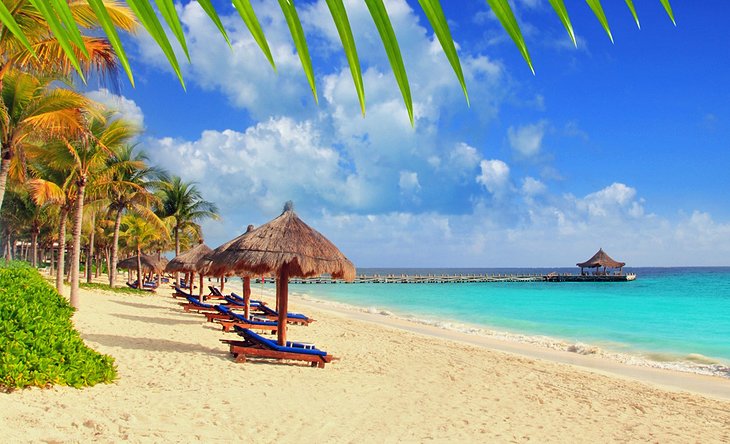
Lying along a beautiful stretch of coastline on the Gulf of Mexico are the resort destinations of Cancún, Playa del Carmen, the island of Cozumel, and beyond. Collectively these are known as the Riviera Maya.
This magnificent area along the eastern edge of the Yucatán Peninsula attracts some five million visitors each year, in the process generating huge tourist revenues. Despite these numbers, you're unlikely to feel like a part of a crowd due to the Riviera's wide beaches, endless crystal-clear water, and plethora of best all-inclusive resorts.
The area also boasts numerous fun things to do, such as dolphin and stingray swims; snorkeling among reefs and tropical fish; as well as scuba diving in the world's largest underwater museum, a spectacular collection of sculptures submerged at depths of up to eight meters.
Then, of course, there's the region's many ancient Mayan ruins, with some of the closest sites within walking distance of the beaches, while the largest and most impressive – Chichén Itzá and Tulum – are just a few hours away.
2. Puerto Vallarta
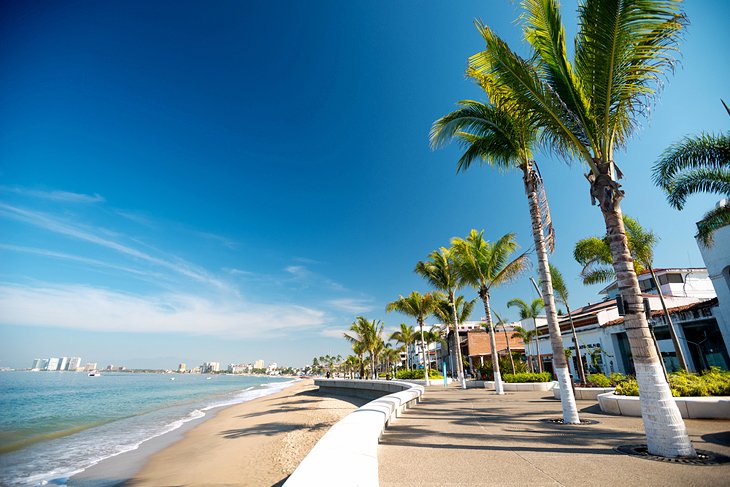
Another of Mexico's increasingly popular beach destinations is the Pacific coastal city of Puerto Vallarta. Often shortened to just "Vallarta," the city first appeared on the vacation radar in the 1960s as a playground for North America's social elite and has since become extremely popular among foreigners looking for second homes in a sunny, warmer climate. Many parts of it remain untouched by modern development.
Nowadays, thanks to the many things to do in Puerto Vallarta, the city is as likely to attract an older cruise ship audience looking to swim with the dolphins as it is younger travelers looking for adventure, found here in activities as diverse as paragliding and jet skiing.
For those who like vacationing at a little slower pace, the city also boasts many locations to shop for arts and crafts or to simply stroll along pleasant beachside promenades with their many green spaces and sculptures.
Of course, like any good resort destination in Mexico, you can't leave the city without visiting the best beaches in Puerto Vallarta.
3. Cabo San Lucas and the Los Cabos Corridor
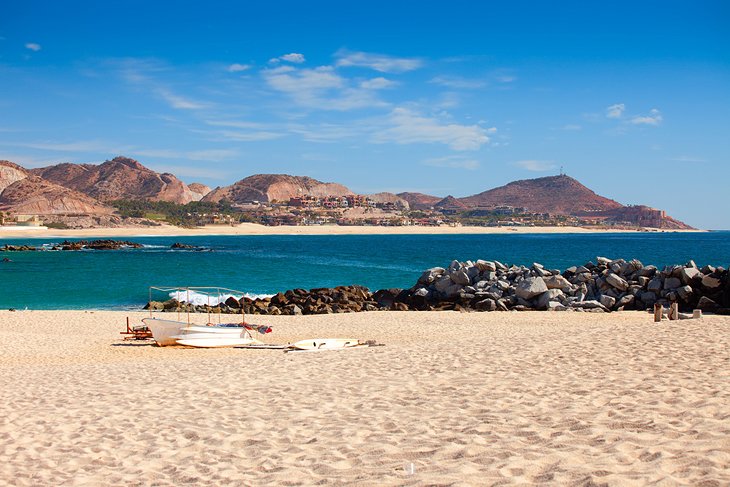
At the southern tip of the beautiful Baja Peninsula, Los Cabos – often referred to simply as "Cabo" – is one of Mexico's top beach destinations. Consisting of a large stretch of coastline that extends from the towns of Cabo San Lucas and San José del Cabo and known as the Los Cabos Corridor (Corredor Turistico), this 30-kilometer stretch of pristine beaches attracts visitors the world over for its clear waters, diving, snorkeling, and fishing (it also hosts the world's largest marlin contest).
Numerous resorts have sprung up that cater to all tastes and budgets, from luxurious spas to golf-centered properties offering some of the best courses in North America. For the most part, however, Los Cabos most appeals to big-budget travelers. It is one of the luxury capitals of Mexico.
In addition to spending time on the beaches and exploring Cabo San Lucas, one of the most popular things to do is swimming and snorkeling around the famous natural landmark El Arco de Cabo San Lucas, a huge archway carved out of the coastline where the Sea of Cortez meets the Pacific.
4. Copper Canyon: Mexico's Grand Canyon
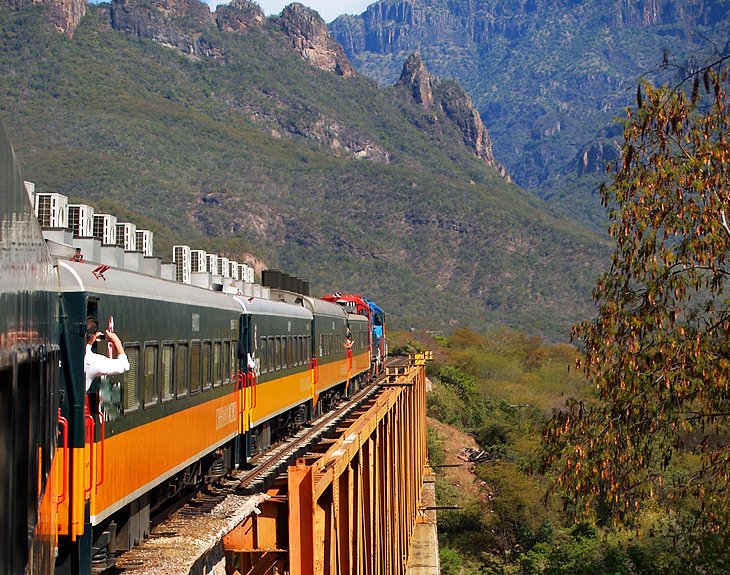
Chihuahua, one of Mexico's most northerly states – it shares the border with New Mexico in the US – is home to one of the country's most visited natural attractions, the stunning Copper Canyon (Barranca del Cobre).
Located in a region known as the Sierra Madre Occidental and consisting of a spectacular group of deep canyons, Copper Canyon is in fact larger and deeper than its better known cousin, the Grand Canyon. Taking its name from the distinctive copper green coloring along its steep canyon walls, these amazing natural structures were formed by six rivers that converge in the Rio Fuerte before draining into the Gulf of California.
Thanks to the area's increased popularity as a travel destination, there are numerous options available to those wanting to explore this area of outstanding natural beauty, from scenic rail trips aboard the Ferrocarril Chihuahua al Pacífico to more adventurous excursions by bike or even on horseback.
5. Mexico City's Historic Center
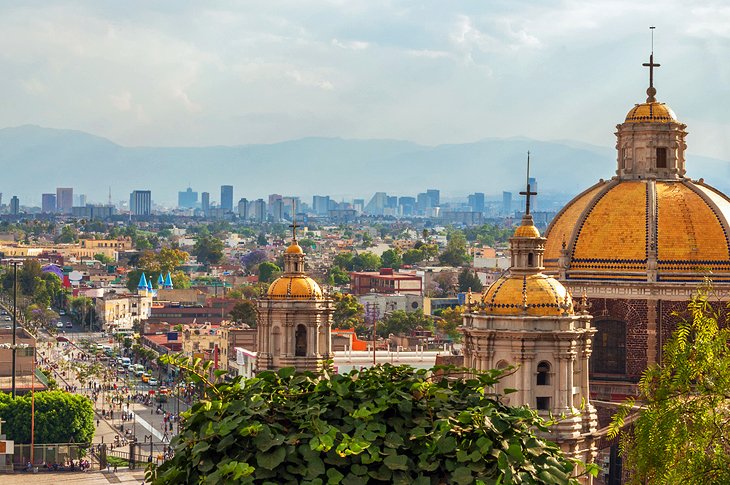
Mexico City (Ciudad de México) is not only the capital of the country and the seat of government, it is one of the country's most popular alternative travel destinations thanks to its many world-class museums, art galleries, and attractions. Don't be put off by its size. Instead, focus your efforts on the historic city center (Centro Histórico de la Ciudad), a 15-square-kilometer UNESCO World Heritage Site boasting more than 1,400 important colonial buildings from the 16th to the 19th centuries.
It's here, you'll find most of Mexico City's major highlights, many within walking distance of Constitution Square (Plaza de la Constitución), the city's bustling main plaza, including the National Palace, the Metropolitan Cathedral, and the Templo Mayor with its Aztec relics. Adding to the whole experience are the huge volcanic mountains overlooking the city, Popocatépetl and Iztaccíhuatl, each over 5,000 meters tall and offering a perfect excuse to get out and explore the stunning scenery in this part of the Mexican Highlands.
6. Chichén Itzá: The Mayan Metropolis
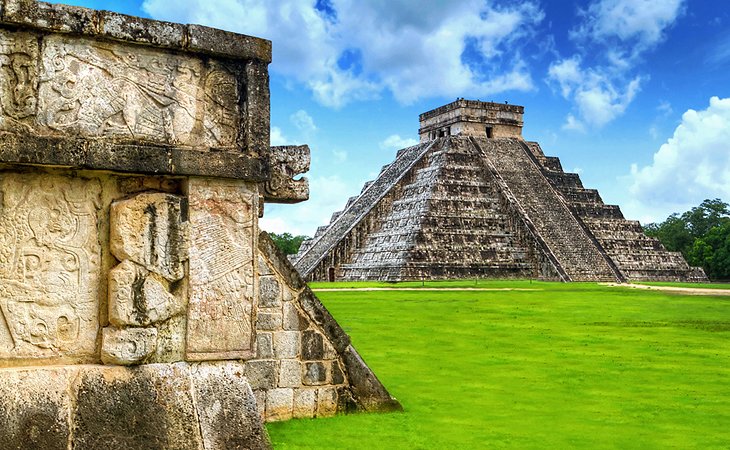
A popular day trip for those visiting Cancún and Playa del Carmen or the Yucatán capital of Mérida, the magnificent Mayan city of Chichén Itzá is one of Mexico's most visited archaeological sites, as well as one of the biggest and best restored. Highlights of a visit to this UNESCO World Heritage Site are numerous. A must-see here is the massive El Castillo, also known as the Pyramid of Kukulkán, and at 30 meters high, the site's tallest structure.
Another noteworthy point of interest here is the magnificent Caracol, an almost 1,000-year-old observatory that stands testament to just how advanced the Mayans were. The building is notable for the narrow slits in its walls allowing the sun to penetrate twice per year, so priests could accurately determine the date. Also of interest are the site's numerous statues, including many examples of the famous Mayan Chacmools holding their sacrificial vessels as they continue to protect these old temples.
7. Guanajuato
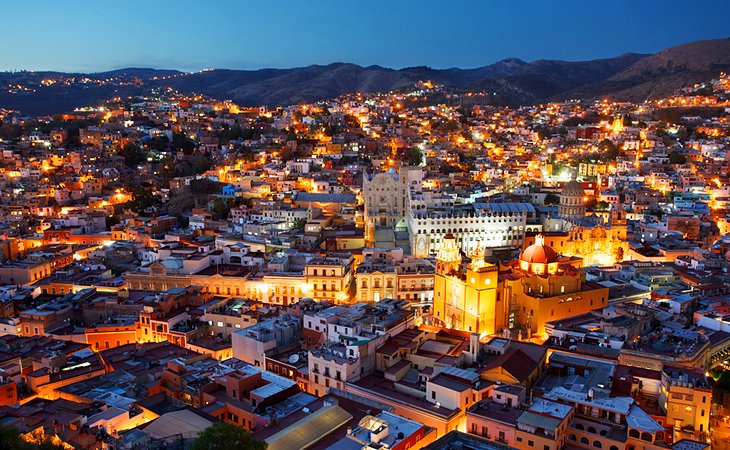
Designated a UNESCO World Heritage Site thanks to its many old colonial buildings, winding lanes, and narrow alleys, Guanajuato is a city that just begs to be explored on foot. A particularly pleasurable experience is visiting its many plazas, including the delightful Jardin de la Union, the city's main square with its splendid old architecture. It's here, you'll find the beautiful old San Diego Church and the majestic Juárez Theater, along with fountains and flower beds, cafés, and restaurants.
Afterwards, head underground to the city's subterranean streets, part of a network of tunnels that once carried a river but are now used by cars and pedestrians wanting to get around the city quickly.
Known as an art city, Guanajuato is home to many fine galleries, as well as interesting museums, none more so than the Museum of Quixote, dedicated to the works of Spanish writer Miguel de Cervantes. The city also hosts Latin America's most important festival in honor of the writer, the International Cervantino Festival. And if you've got the stomach for it, check out the city's famous Mummies of Guanajuato exhibit, with its many naturally mummified remains of locals who died during an outbreak of cholera in the mid-19th century.
8. Ixtapa and Zihuatanejo
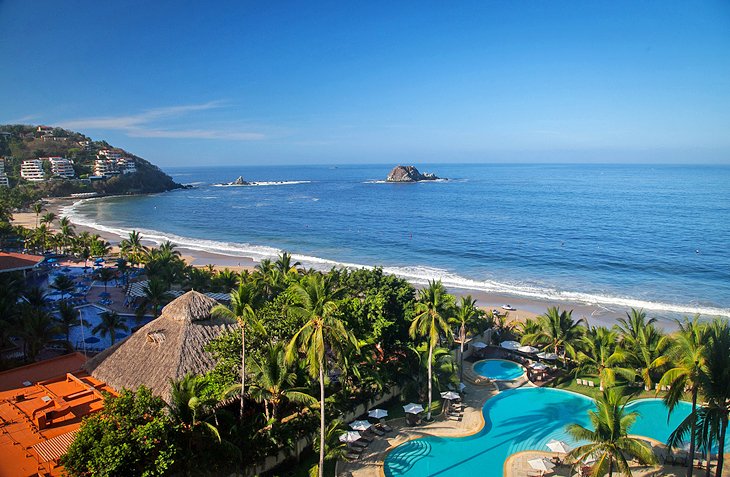
While there's no denying the appeal of Mexico's larger beach resorts, there's much to be said for paying a visit to some of the country's many smaller vacation destinations. Two of the very best are the towns of Ixtapa and its neighbor, the much smaller former fishing village of Zihuatanejo on the country's Pacific coast.
Although the larger of the two, the former coconut and mangrove producing town of Ixtapa has been carefully master-planned as a tourist hub to good effect – its streets and beaches are uncluttered and easy to get around. Be sure to book one of the best all-inclusive resorts in Ixtapa.
The contrast to traditional beach resorts is even greater in beautiful Zihuatanejo, which has worked hard to keep its small-town feel. Still, the town offers a lengthy list of things to do. Lying along a small, well-protected bay, it's a delightful and safe town to explore, home to a number of fine hotels and restaurants. Fun activities include shopping in its fish market or, better still, taking a fishing excursion to catch something of your own.
9. The Ancient Fortress of Tulum
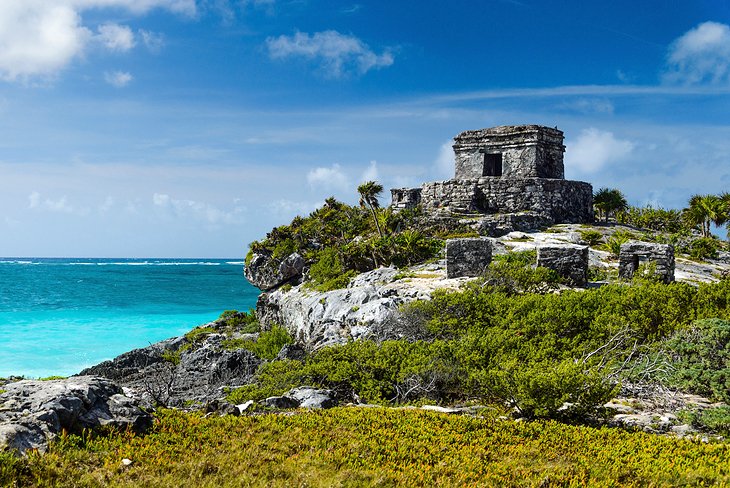
Famous as the only fortified Mayan settlement located on the coast, the ancient city of Tulum is one of the Yucatán Peninsula's most visited attractions. In the Mayan Riviera and within easy reach of the beaches of Cancún, Playa del Carmen, and Cozumel, the site's well-preserved ruins can be seen for miles around due to their location atop 12-meter-high cliffs overlooking the beautiful Caribbean Sea.
Tulum is also famous for its tall walls, giving the site the feel of a fortress and suggesting a military, as well as religious significance. Dating from the 13th century, the town was inhabited up until the Spanish arrived in 1544 and contains many other important archaeological finds, including the Temple of the Frescoes (Templo de los Frescos), with its sculptures and reliefs, and the Castillo, the site's largest building, famous for its cliff side location.
10. Cozumel: Island Life
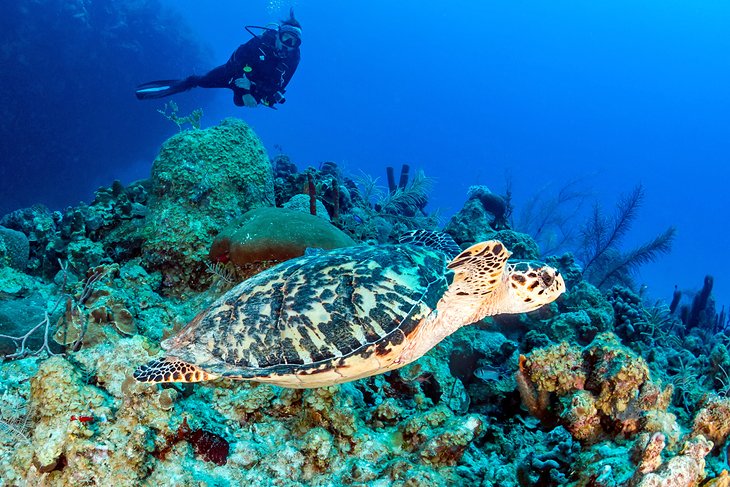
The island of Cozumel has pretty much everything needed for a perfect Mexican getaway. Located 20 kilometers from the Yucatán Peninsula, this lush tropical paradise takes its name from the ancient Mayan, "Ah-cuzamil," which translated means "land of the swallows," and has long been inhabited. And while the first visitors to the island were reputedly Mayan pilgrims, followed by European smugglers and pirates, modern-day travelers are drawn here by the promise of endless sunshine. The top beaches for these sun-seekers are Playa San Juan, Playa San Francisco, and Playa Santa Rosa, to name but a few.
Many are attracted to Cozumel by the superlative diving experiences to be enjoyed around its coral reefs. These beautiful locations are rich with fish and other marine life, and it's relatively easy to include at least a little underwater activity by booking a diving experience through your resort (or ahead of your travel), or simply grabbing a pair of flippers and a mask when you get here.
If you're into serious diving, head to the Palancar Reef on the southwest tip of the island. Here, you'll be rewarded with an undulating seabed that plunges from its shallow spots to depths of 80 meters. A relatively new experience includes diving around man-made landmarks, including sculptures and bronze figures, as well as structures deposited to encourage coral growth.
Be sure to drag yourself away from the island's crystal-clear waters long enough to see at least a little of the island's capital, San Miguel de Cozumel. Here, you can grab a ferry for a day trip to either Playa del Carmen or Cancún, or explore top tourist attractions such as the Island Museum with its fascinating displays relating to the island's history, or partake in some shopping or dining.
11. Guadalajara
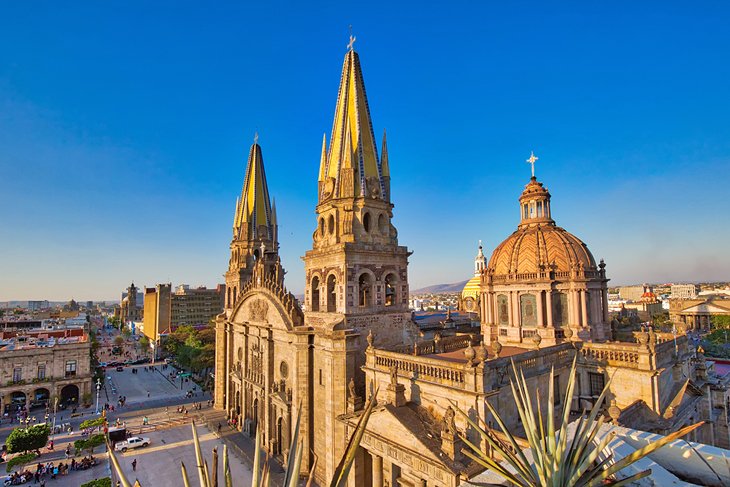
Second only to Mexico City in size, Guadalajara, capital of the state of Jalisco, has successfully conserved its unique mix of colonial and native Tapatíos influences. Famous for its broad avenues flanked by picturesque parks and fine old buildings notable for their European flair, Guadalajara is a hotbed of traditional Mexican culture, from the mariachi music that seems to emanate everywhere, to its fascinating Charreadas, a type of rodeo that is usually accompanied by festivities such as dancing, singing, and plenty of great food.
It's a fun city to explore on foot due to the four large squares that together form the shape of a cross and comprise the old city center. The best of them, Plaza de Armas, is the perfect place to begin a sightseeing tour and includes such notable buildings as the 17th-century Government Palace (Palacio de Gobierno) and the beautiful Baroque Guadalajara Cathedral (Catedral de Guadalajara), built between 1558 and 1616.
12. Historic Morelia
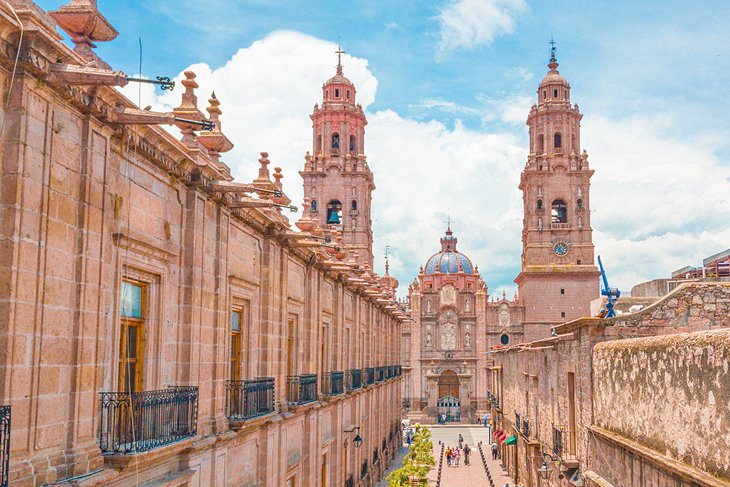
A gem of a city, the colonial-era Morelia is a delightful place to linger in Mexico, whether you're here for a few days or longer. Little change has been made to the layout of this historic city, founded in 1541, and thanks to the more than 200 well-preserved buildings that date back many hundreds of years, the entire downtown core has been designated as a UNESCO World Heritage Site.
A highlight of a visit is spending time in the magnificent Plaza de Armas. Laid out nearly 500 years ago, this large public square is perfect for those who like to explore on foot. In addition to its many great cafés, restaurants, and shopping opportunities, here you'll find everything from statues of revolutionary heroes to attractive stretches of gardens and pleasant fountains, making for one of the prettiest cityscapes in all of Mexico.
Nearby attractions you'll want to visit include the attractive Morelia Cathedral, built from local stone over a period of 100 years, starting in 1640, and still dominating the skyline to this day. Be sure to pop inside, too, and spend time examining interesting features, including its amazing artwork. A short walk from here is another must-see: the Morelia Aqueduct. Completed in 1789 and featuring over 250 arches, it, too, was built of local stone, and for years was the city's main source of drinking water.
13. Riviera Nayarit
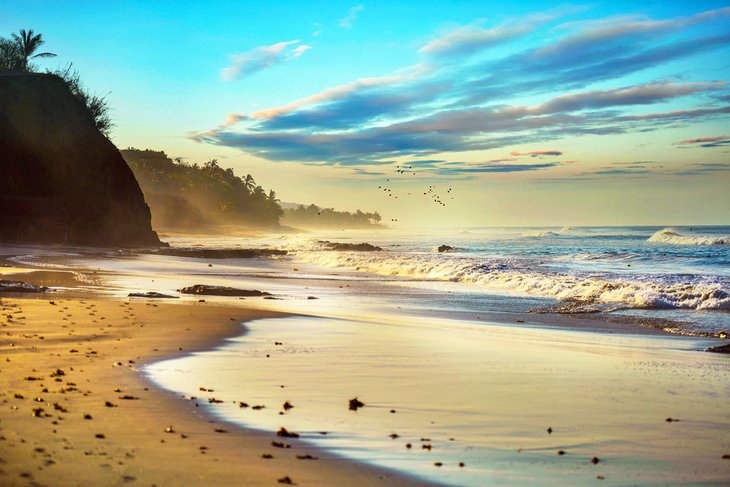
If you haven't heard of it yet, chances are you will very soon. Riviera Nayarit is the stretch of coastline north of Puerto Vallarta that begins in the neighboring state of Nayarit. Familiar towns that stick out might include Sayulita, or the luxury enclave peninsula that is Punta Mita. But Riviera Nayarit has so much more to explore and is practically overgrown with natural beauty.
While Puerto Vallarta was building and expanding, surfers for decades have been flocking to the jungle-beaten paths and virgin beaches to the north. The picture is a little different these days, as once-fishing villages have turned to sleepy boutique hotel towns. Five-star resorts and villas dot the hillsides, and former surf towns have been reinvented as havens for yoga retreats and boho-chic galleries. The ultra high-end luxury is well on its way.
Still, the more north you go up the coast, the more you'll be traveling back in time to a simpler time of Mexico beach beauty – complete with rolling, emerald-colored peaks, craggy cliffs that plummet into the ocean, and nothing but a string of shady palapas along golden-colored sand, as far as the eye can see.